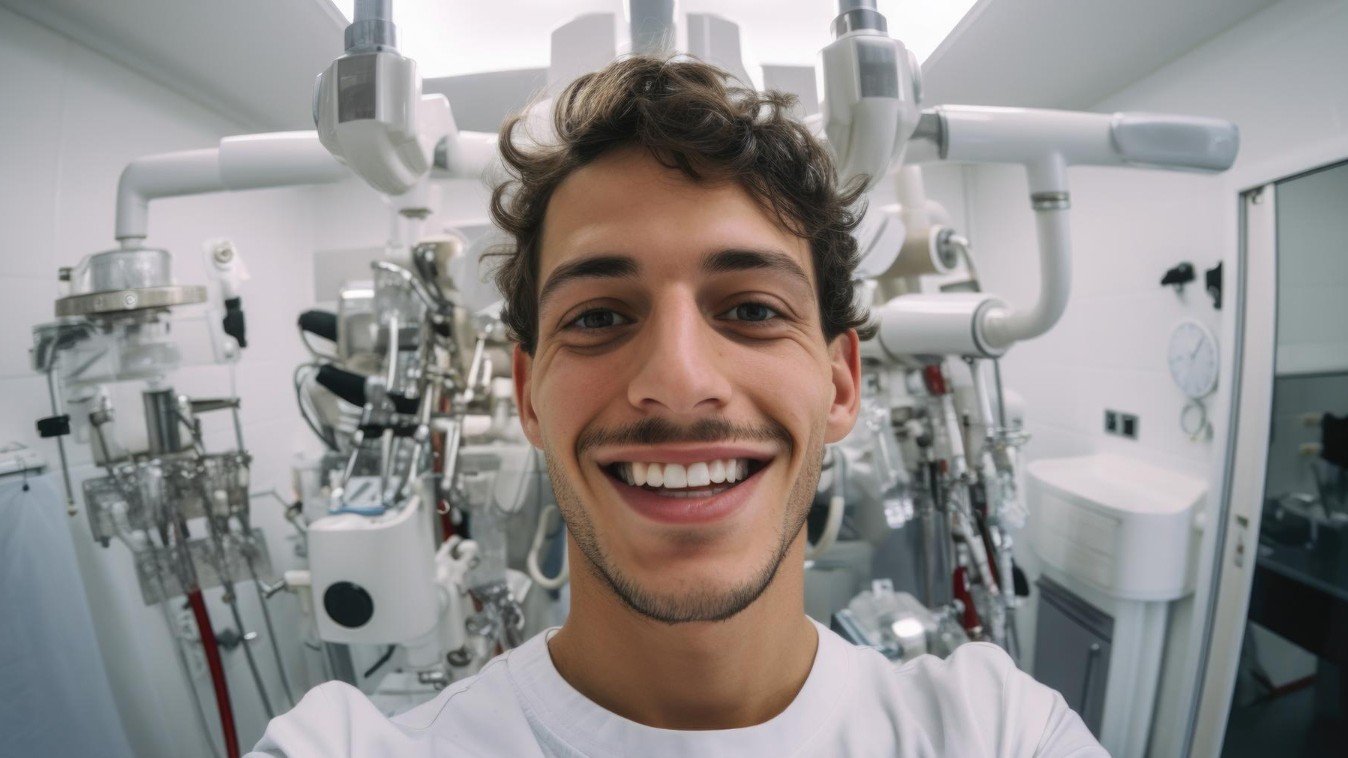Key Takeaways
- Content atomisation breaks larger content into smaller digestible pieces that can be distributed across multiple platforms, maximising your dermatology clinic’s digital reach.
- UK’s competitive dermatology market requires content efficiency – atomising one expert piece can generate dozens of valuable patient touchpoints.
- A strategic content atomisation approach can significantly boost your clinic’s SEO performance for skin-related keywords.
- MedFire Media helps London skin clinics transform their clinical content into powerful multi-channel assets, connecting with patients throughout their decision journey.
- The most successful dermatology practices use content atomisation to build medical authority while strictly complying with UK healthcare regulations.
Skin Clinics’ Content Challenge: Why Atomisation Matters
Standing out in the crowded dermatology market requires more than excellent clinical care. Your expertise needs to be visible where potential patients are looking – and they’re looking everywhere. The challenge? Creating enough high-quality, medically accurate content to maintain visibility across all these channels can be overwhelming.
Content atomisation provides the solution you need. MedFire Media, a division of Logjam Solutions Limited, has helped numerous speciality healthcare practices transform their digital presence through strategic content atomisation. Their approach addresses skin clinics’ unique challenges in a competitive metropolitan market.
Content atomisation isn’t just about reusing content – it’s a systematic approach to maximising the impact of your clinical expertise by breaking comprehensive information into specialised, platform-specific pieces. For dermatologists with limited marketing time, it’s the difference between struggling to produce enough content and maintaining a consistent, authoritative presence across all digital touchpoints.
What Is Content Atomisation and Why Dermatologists Need It
Definition: Breaking Complex Skin Treatment Content into Micro-Assets
Content atomisation is the strategic process of breaking down larger pieces of content into smaller, focused components that can be distributed across multiple marketing channels. For dermatology practices, this means taking comprehensive clinical information, perhaps about a specific skin condition or treatment, and creating multiple digestible content pieces from it.
Think of your core content as the atom and the smaller pieces as subatomic particles. Each particle maintains the essence of the original while being optimised for specific platforms and purposes. A comprehensive guide on skin treatments can transform into social media posts, educational videos, targeted ads, email newsletter segments, and patient FAQ resources.
How Atomisation Differs from Simple Content Repurposing
While many clinics already repurpose content, atomisation takes this concept further. Content repurposing typically changes the format while keeping the scope similar—like turning a blog post into a video. Atomisation, however, involves breaking content into smaller, more focused pieces that examine specific aspects of the original topic.
For example, a comprehensive guide about cosmetic treatments might be repurposed into a podcast. But with atomisation, that same guide becomes a series of social media posts about different treatment types, an email sequence addressing common patient concerns, and targeted landing pages for specific treatment areas – each piece strategically designed to work independently while supporting the broader content ecosystem.
Why UK’s Competitive Dermatology Market Requires Content Efficiency
When running a busy dermatology practice, your time primarily focuses on patient care. Yet in one of the world’s most competitive healthcare markets, maintaining a strong digital presence isn’t optional—it’s essential for practice growth. Content atomisation offers a solution that maximises efficiency while expanding your reach.
Patients researching dermatological concerns don’t just visit one website or platform. They move between search engines, social media, video platforms, and healthcare review sites. Without atomisation, you’d need to create unique content for each channel—an overwhelming task for busy clinicians.
With atomisation, a single well-produced piece of content—like an in-depth guide on a popular treatment—can fuel dozens of smaller content assets, ensuring your expertise reaches potential patients wherever they are in their decision journey.
5 Key Benefits of Content Atomisation for Dermatology Practices
1. Reaching Diverse Patient Demographics Across Multiple Channels
UK”s diverse population means your potential patients have vastly different content consumption habits. Different age groups and demographics might discover your practice through different platforms and content formats.
Content atomisation allows you to tailor your expertise to these different preferences without starting from scratch each time. Your comprehensive guide on skin treatments can become:
- Visual comparison carousels for social media
- In-depth video explanations of treatment options
- Patient testimonial snippets for your business profiles
- Targeted FAQ sections for your website
2. Building Medical Authority Through Consistent Content Presence
Establishing authority in dermatology requires more than occasional content publishing. Patients need to see your expertise consistently across multiple touchpoints to build the trust necessary for booking consultations.
Content atomisation creates this consistent presence by ensuring you always have relevant, expert-level content to share. Rather than publishing sporadically when you find time to create new material, you can maintain a steady stream of valuable information derived from your core content pieces.
This consistency signals to potential patients that your practice is active, engaged, and committed to patient education, key differentiators in the crowded dermatology market.
3. Boosting Local SEO for Skin Clinic Visibility
Patients searching for dermatology services use various search terms and questions. Content atomisation helps your practice capture this search traffic by creating multiple entry points to your expertise.
Breaking down comprehensive guides into focused, keyword-optimised, smaller pieces allows you to target specific queries related to treatments, conditions, and locations. Each atomised content piece can rank for these specific searches, dramatically improving your SEO footprint and making your practice more discoverable to patients seeking dermatological care.
4. Maximising Educational Impact with Targeted Content Fragments
Different aspects of dermatological treatments require different levels of explanation. Content atomisation allows you to create educational materials that address specific patient concerns at the correct depth.
For example, a comprehensive guide on a skin treatment can be atomised into:
- A quick social media video showing the treatment process
- A detailed blog post explaining the science behind the treatment
- A comparative infographic showing different options for various skin concerns
- A patient preparation checklist delivered via email
This targeted approach ensures patients receive accurate information they need at each stage of their decision journey.
5. Improving Content ROI Through Strategic Reuse
Every piece of content your dermatology practice creates represents an investment of time, expertise, and resources. Content atomisation maximises the return on this investment by extending the lifespan and reach of your most valuable content assets.
Instead of creating 20 separate pieces of content from scratch, you can create one comprehensive piece and atomise it into 20 variations—each optimised for different platforms and purposes. This approach saves valuable time and ensures consistent messaging across all patient touchpoints.
For busy dermatologists juggling patient care with practice management, this efficiency is invaluable. It allows you to maintain a robust content presence without constantly diverting clinical time to content creation.
Practical Content Atomisation Process for Dermatologists
Identifying Your Core Clinical Content Assets
The first step in effective atomisation is identifying your ‘cornerstone’ content—comprehensive pieces that showcase your expertise and address your patients’ most common concerns.
Ideal core content for dermatology practices includes:
- Comprehensive treatment guides
- Educational content about common skin conditions
- Detailed explanations of procedures
- Patient transformation journeys and case studies
- Seasonal skincare advice
These core pieces should be thorough, authoritative, and rich with information that can be later extracted and atomised. They serve as the foundation for all your atomised content.
Mapping Patient Journey Touchpoints for Content Distribution
Before atomising content, map out your potential patients’ journey from initial awareness to post-treatment follow-up. For a dermatology clinic, this journey might include:
- Initial symptom research (search engines, medical websites, reliable news sources)
- Treatment option research (your website, informational content, social media posts)
- Provider selection (reviews, testimonials, galleries)
- Pre-appointment preparation (email newsletters, resources)
- Post-treatment care (follow-up communications, instructional content)
Understanding these touchpoints helps you determine which content fragments will be most valuable at each stage, ensuring your atomisation strategy aligns with patient needs.
Selecting Optimal Formats for Medical Information
Different aspects of dermatological information are best conveyed through different formats. When atomising your core content, consider which formats will most effectively communicate each piece of information:
- Visual comparisons → Images or galleries
- Treatment processes → Step-by-step videos or infographics
- Scientific explanations → Blog posts or audio content
- Patient testimonials → Video clips or quoted text
- Aftercare instructions → Downloadable resources or email sequences
The key is matching the content fragment to the format that best showcases that specific information while considering the platform where it will be shared.
Adapting Clinical Content for Different Platforms
Each platform has its own content requirements, audience expectations, and technical limitations. Successful atomisation requires adapting your clinical content accordingly:
- Social media: Visual-forward content with concise captions, focusing on results
- Email: More detailed explanations, personalised information based on patient interests
- Business profiles: Concise, searchable information focusing on specific treatments
- Professional networks: Content highlighting innovative approaches or research
- Video platforms: Quick, engaging explanations or treatment demonstrations
While maintaining clinical accuracy, each adaptation should be optimised for the specific platform’s format, audience, and preferences.
Measuring Patient Engagement and Conversion
The final step is tracking performance to identify which atomised content pieces most effectively engage potential patients and drive consultations. Key metrics to monitor include:
- Engagement rates across different platforms
- Traffic to your website from atomised content
- Consultation bookings attributed to specific content pieces
- Patient feedback on educational materials
- Time spent with different content formats
This data helps refine your atomisation strategy, focusing resources on the most effective formats and platforms for your dermatology practice.
Dermatology-Specific Atomisation Opportunities
Turning Case Studies into Before/After Social Media Posts
Patient case studies contain rich clinical information that can be atomised into compelling visual content. With proper consent, transformation stories can be broken down into specific aspects of treatment to create focused, educational content that showcases results while explaining the science behind them.
Converting Treatment Explanations into Educational Videos
Comprehensive treatment guides can be atomised into short, focused video segments that address specific patient questions. These videos can be organised into series addressing different aspects of the same treatment, allowing patients to consume information based on their concerns.
Transforming Skin Condition Guides into Shareable Infographics
Detailed information about skin conditions can be visualised through infographics highlighting symptoms, causes, and treatment options. These visual elements can be shared across platforms, incorporated into blog posts, or sent directly to patients seeking information about specific conditions.
Implementation Best Practices for Skin Clinics
Maintaining Clinical Accuracy Across All Content Fragments
As you atomise content, maintaining medical accuracy is paramount. Even when simplifying complex dermatological information for different formats, ensure all claims remain clinically sound and evidence-based. Each fragment, no matter how small, should uphold the same standard of medical accuracy as your comprehensive content.
Ensuring Brand Consistency While Adapting to Platform Requirements
While formats and tones may vary across platforms, your clinic’s brand voice and visual identity should remain consistent. Develop clear guidelines for how your brand translates to different content formats while maintaining recognisable elements that build trust and recognition among potential patients.
Complying with UK Medical Advertising Regulations
All atomised content must adhere to UK healthcare advertising regulations, especially regarding claims about treatments and outcomes. Establish a review process for atomised content to ensure compliance, particularly when creating more promotional content formats.
Transform Your Dermatology Practice’s Digital Presence Today
Content atomisation offers dermatology clinics a strategic approach to maximising their digital presence while minimising resource investment. By breaking down comprehensive content into targeted, platform-specific pieces, your clinic can reach more potential patients across multiple touchpoints while maintaining clinical accuracy and brand consistency.
MedFire Media specialises in helping dermatology practices implement effective content atomisation strategies that drive practice growth while respecting the unique needs of medical communication.
{video_pr:link}


Comments are closed.